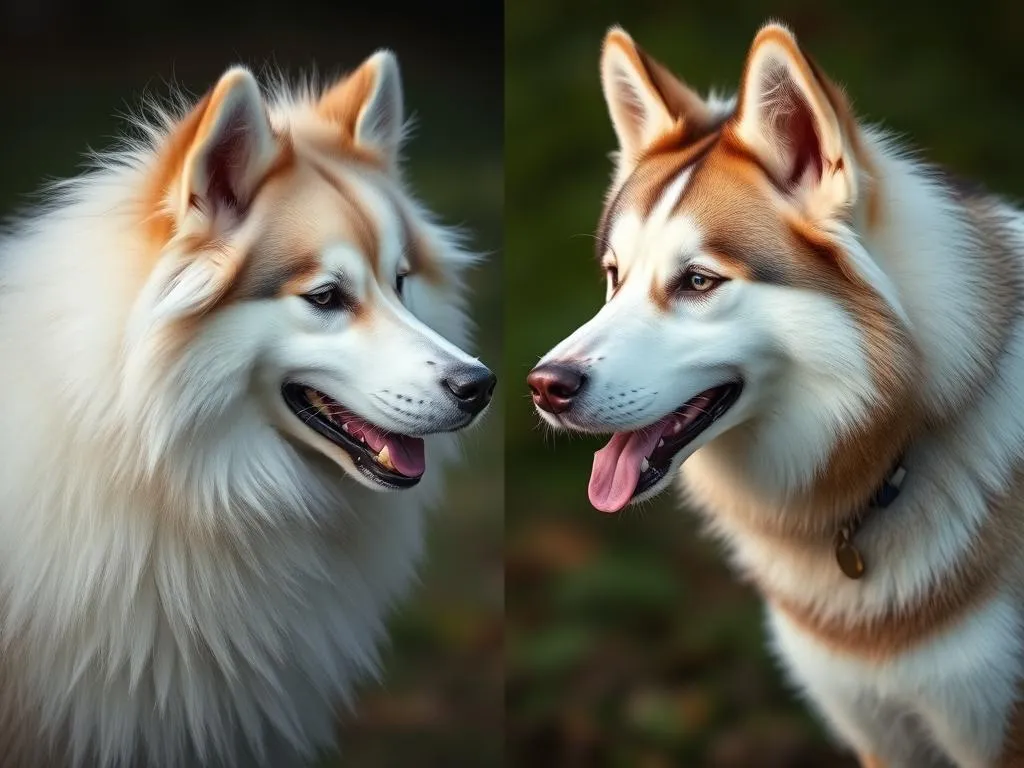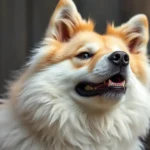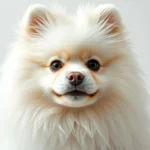
Understanding the characteristics of different dog breeds is crucial for anyone considering adding a furry companion to their family. Among the myriad of breeds available, the Samoyed and the Husky stand out for their beauty, intelligence, and friendly disposition. While both breeds share some similarities, they also exhibit distinct traits that set them apart.
Overview of Dog Breeds
Definition of Dog Breeds
A dog breed is a specific group of domestic dogs with distinctive characteristics, such as appearance, behavior, and temperament, that can be reliably passed on to their offspring. Understanding these breed traits helps potential dog owners select a breed that fits their lifestyle, living situation, and personal preferences.
Popularity of Samoyeds and Huskies
Both the Samoyed and the Husky enjoy significant popularity among dog lovers. According to the American Kennel Club, the Husky ranks among the top 15 most popular dog breeds in the United States, while the Samoyed holds a respectable position as well. Their appealing looks, coupled with their friendly and energetic personalities, make them favorites for families, active individuals, and outdoor enthusiasts.
Origins and History
Samoyed Origins
The Samoyed breed originates from Siberian nomadic tribes known as the Samoyeds. These dogs were bred primarily for herding reindeer, pulling sleds, and providing companionship. Their thick fur and resilience to harsh climates made them invaluable to their human counterparts. The Samoyed’s friendly demeanor was also essential, as they often lived in close quarters with families.
Husky Origins
The Husky, specifically the Siberian Husky, also traces its roots to the Arctic regions. Bred by the Chukchi people, these dogs were used for pulling sleds over long distances and as companions in harsh weather conditions. The Alaskan Husky, a variation of the breed, is a mix of various types of sled dogs, primarily aimed at maximizing endurance and speed. Both breeds played crucial roles in the survival of the indigenous cultures in which they thrived.
Physical Characteristics
Samoyed Physical Traits
The Samoyed is a medium to large-sized dog, typically weighing between 45 to 65 pounds and standing 19 to 24 inches tall at the shoulder. They are renowned for their fluffy, white coat, which can also appear in cream or biscuit shades. One of the breed’s most distinctive features is the “Sammy smile,” a characteristic expression that gives them a friendly and approachable appearance.
Husky Physical Traits
The Husky is slightly larger than the Samoyed, weighing between 35 to 60 pounds and reaching heights of 20 to 24 inches. Their coats are thicker and can come in various colors, including black, gray, red, and agouti, often showcasing striking facial masks. A common trait among Huskies is their captivating blue eyes, though some may have brown or even one of each.
Temperament and Personality
Samoyed Temperament
Samoyeds are known for their friendly and social nature. They thrive on human interaction and are often described as affectionate and playful. Their gentle temperament makes them suitable for families, including those with children. They are eager to please and generally get along well with other pets.
Husky Temperament
In contrast, Huskies are often seen as more independent and spirited. They are energetic and require plenty of stimulation to prevent boredom. While they can be affectionate, their independent streak might make them less eager to please than Samoyeds. They are usually good with children but may not exhibit the same level of patience as the Samoyed.
Exercise and Activity Needs
Samoyed Activity Requirements
Samoyeds require regular exercise to maintain their physical and mental well-being. A daily routine of at least 60 minutes of exercise, including walks, playtime, and mental stimulation, is essential. They enjoy engaging activities such as dog sports, which can help channel their energy positively.
Husky Activity Requirements
Huskies are incredibly active dogs and need even more exercise, often requiring 1 to 2 hours of vigorous activity each day. They excel at running, hiking, and even sledding, thanks to their strong endurance. Without adequate exercise, Huskies can become bored and may resort to destructive behaviors.
Grooming and Maintenance
Grooming Needs for Samoyeds
The Samoyed’s thick double coat requires regular grooming to manage shedding and maintain a healthy appearance. They shed year-round, with heavier shedding periods occurring in the spring and fall. Regular brushing, at least once a week, is ideal, while daily brushing is recommended during shedding seasons. Bathing should be done only when necessary to avoid stripping the coat of its natural oils.
Grooming Needs for Huskies
Similarly, Huskies have a double coat that sheds quite a bit. They also require regular grooming, particularly during shedding seasons. A good brushing at least once a week is essential, with more frequent grooming needed when they blow their coat, usually twice a year. Like Samoyeds, Huskies should only be bathed when necessary, as their skin is sensitive.
Health Considerations
Common Health Issues in Samoyeds
Samoyeds can be prone to certain hereditary health issues, including hip dysplasia, skin disorders, and heart problems. Regular veterinary check-ups and a healthy diet can help mitigate these risks. Being proactive about health care can lead to a longer, healthier life for your Samoyed.
Common Health Issues in Huskies
Huskies also face health challenges, including hip dysplasia and various eye problems, such as cataracts and progressive retinal atrophy. Responsible breeding practices and regular veterinary assessments are essential to ensure that Huskies remain healthy and vibrant throughout their lives.
Training and Socialization
Training Samoyeds
Training a Samoyed can be an enjoyable experience, as they are eager to learn and please their owners. Positive reinforcement techniques, such as treats and praise, work best. Early socialization is crucial to ensure they develop good manners and become well-rounded dogs. However, they can be somewhat stubborn, requiring patience and consistency from their trainers.
Training Huskies
Training a Husky can present more challenges due to their independent nature. They respond best to positive reinforcement and need a firm, consistent hand. Early socialization is vital to help them learn appropriate behaviors and get along with other pets and people. Patience is key, as Huskies may test boundaries.
Ideal Living Conditions
Living Conditions for Samoyeds
Samoyeds thrive in environments where they can be part of the family. They prefer homes with yards where they can play and explore. However, they can adapt to apartment living if given enough exercise and mental stimulation. Their sociable nature means they dislike being left alone for long periods, so companionship is essential.
Living Conditions for Huskies
Like Samoyeds, Huskies benefit from having space to run and play. They are best suited for homes with large yards or easy access to parks. Huskies are also known for their strong prey drive, so a secure fence is a must. They can adapt to apartment living but require ample exercise to keep them happy and healthy.
Cost of Ownership
Initial Costs (Samoyeds)
The initial costs of owning a Samoyed can range from $1,000 to $3,000, depending on factors like breeder reputation and location. Initial veterinary visits, vaccinations, and supplies (like food, bedding, and toys) can add another $500 to $1,000 to the first-year expenses.
Initial Costs (Huskies)
The cost of acquiring a Husky is similar, typically ranging from $800 to $2,500. Like Samoyeds, initial veterinary care and supplies will also set owners back by about $500 to $1,000.
Ongoing Costs for Both Breeds
Ongoing costs for both breeds include food, grooming supplies, regular veterinary check-ups, and training. On average, owners can expect to spend between $800 to $1,200 annually for food and medical care. Grooming expenses can vary, especially during shedding seasons, so budgeting for these costs is essential.
Conclusion
In summary, the Samoyed vs Husky debate highlights important considerations for prospective dog owners. While both breeds share a rich history, striking appearance, and energetic disposition, their personalities, exercise needs, and grooming requirements differ significantly. Potential owners should consider their lifestyle, activity level, and family dynamics when choosing between these two beautiful breeds. Understanding the unique traits of each can lead to a rewarding experience for both the dog and its owner, emphasizing the importance of responsible dog ownership and breed selection.









